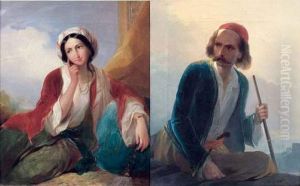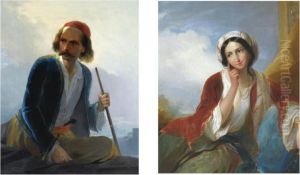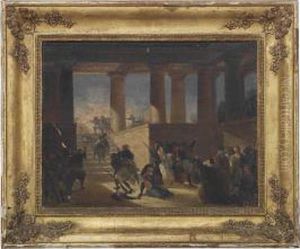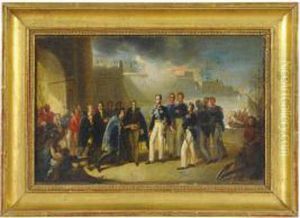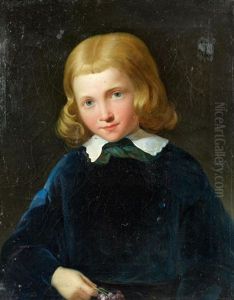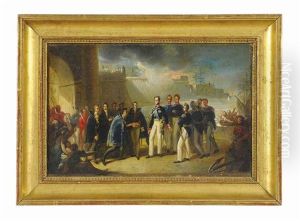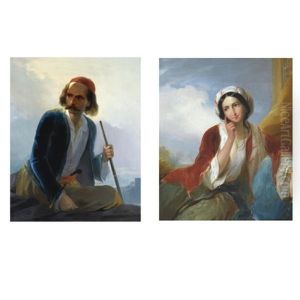Giovanni Marghinotti Paintings
Giovanni Marghinotti was an influential Italian painter born in 1798 in Oristano, Sardinia. His artistic journey began in a period marked by significant political and social changes in Italy, which influenced the art scene deeply. Marghinotti's early life and education in art are not extensively documented, but it is known that he moved to Rome, which was then a vibrant center for artists, to further his studies and refine his craft. His work primarily revolved around portraiture and historical scenes, capturing both the essence of individual characters and the grandeur of historical narratives with equal finesse.
Marghinotti's style was deeply rooted in the Neoclassical tradition, which was prevalent during his formative years. However, he managed to infuse his works with a sense of realism and emotional depth that set him apart from his contemporaries. His portraits, in particular, are noted for their detailed rendering and the ability to capture the subtle nuances of the subject's personality. This skill made him a sought-after portraitist among the nobility and the upper classes in Italy.
Throughout his career, Giovanni Marghinotti enjoyed considerable success and recognition. He became a court painter in the Kingdom of Sardinia, a position that allowed him to portray many significant figures of his time, including members of the Savoy royal family. These works not only cemented his reputation as a master portraitist but also serve as valuable historical documents, offering insights into the fashion, culture, and personalities of the 19th-century Italian nobility.
Marghinotti's contributions to Italian art were not limited to his portraiture. He also engaged in teaching, passing on his knowledge and techniques to a new generation of artists. His influence extended beyond his immediate circle, affecting the development of Italian painting in the 19th century. Despite his success, Giovanni Marghinotti remained connected to his Sardinian roots, which influenced some of his works, adding a unique regional touch to his broader Italian and Neoclassical themes.
Giovanni Marghinotti passed away in 1865, leaving behind a legacy that would influence Italian art for years to come. His works are preserved in various museums and collections across Italy, serving as a testament to his skill and dedication to the art of painting. Through his portraits and historical paintings, Marghinotti has provided a window into an era, capturing the essence of the 19th century with each brushstroke.
